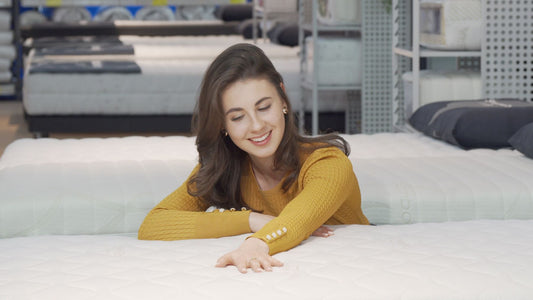When you go to bed after a hard day of work, you naturally want to rest. What you don’t expect is to wake up covered in insect bites. If this is something you’ve experienced, chances are you may have bed bugs.
Bed bug infestations in bedrooms are quite common. These pests can enter your home through various means, such as clothing, luggage, second-hand furniture and more. The travel and tourism industry also plays a significant role in the spread of bed bugs. The bugs can hitch a ride on personal belongings during travels, increasing the likelihood of infestations in homes worldwide.
Once they take hold in your home, they can quickly become a persistent problem. You may find yourself dealing with bites every night. This is why you need to recognize the signs of a bed bug infestation and what you can do to get rid of them. Being proactive can help prevent the problem from escalating.
About Bed Bugs
So, what exactly are bed bugs and how can you identify them? There are two main types of bed bugs: Cimex lectularius, the common bed bug, and Cimex hemipterus, the tropical bed bug. In Singapore, the tropical variant is more prevalent and may be the one causing problems for residents.
Although tiny, bed bugs are still visible to the naked eye. These brown, oval-shaped pests can grow up to a quarter of an inch, roughly the size of an apple seed. They feed on human blood, which is why you wake up with bed bug bite marks. After feeding, these six-legged creatures appear darker brown or reddish.
Bed bugs typically infest in or near areas where people sleep. They are commonly found in mattresses, bedding, clothing, headboards, and other object close to beds.

Common Signs of a Bed Bug Infestation
Identifying a bed bug infestation early is crucial for managing and getting rid of these pests. Here are the key signs to watch for:
1. Bites
If you wake up with bites most mornings, chances are your mattress is infested with bed bugs. Bed bugs tend to bite multiple times, leaving clusters of bites on exposed skin, such as the face, neck, arms, and legs.
It can be sometimes difficult to distinguish bed bug bites from those caused by other insects, like mosquitoes. And some individuals may not develop a reaction to the bites of bed bugs at all.
2. Blood spots
Blood spots or reddish stains on your mattress and bed sheets can be a clear sign of a bed bug infestation. These stains are caused by bed bug bites or bugs being crushed as you move in your sleep.
3. Excrement
Another telltale sign is the presence of dark brown or black spots, which are bed bug droppings. These spots appear on bedding or around the mattress, and the color comes from digested blood.
4. Eggs and Eggshells
While bed bug eggs and eggshells are tiny, you may still be able to spot them. They are pale yellow, about 1 mm in size. The eggs and eggshells are often found in the creases of mattresses or other hidden areas near the bed.
5. Odour
A sweety yet musty odour in and around the bed can signal a severe infestation. Bed bugs secret pheromones which cause the smell. The bigger the infestation, the stronger the odour.
6. Shed Skins of Bed Bugs
As bed bugs grow, they shed their exoskeletons. The sighting of these shed skins is a clear indication of their presence.
7. Live Bed Bugs
And finally, if you actually see live bed bugs in your bedroom, you have an infestation. You might be able to spot them in the folds and seams of your mattress and around your bed. If you inspect your mattress during the day, you might not spot the bed bugs, as they might be hiding. They usually emerge at night when you’re trying to sleep so they can feed.
If you observe any of these signs, it is important to take immediate steps to eliminate the bed bugs. While they don't transmit diseases, bed bugs can cause allergic reactions in some people. The sooner you address the infestation, the easier it will be to manage.

Step-by-Step Guide to Remove Bed Bugs from Your Mattress
So, how do you get rid of bed bugs from your mattress? If you’re tired of sharing your bed with them, here are some practical steps to help you get rid of them:
Step 1. Remove bedding
Start by removing all your bedding. This includes pillowcases, bed sheets, blankets, and covers. Wash everything in hot water to kill bed bugs and their eggs.
To avoid spreading the infestation to other parts of your home, transport the bedding in large sealed bags. You might also want to consider throwing your pillow out, as it is likely to be infested as well.
Step 2. Vacuum the mattress
Next, thoroughly and carefully vacuum your mattress. Pay special attention to seams, folds, and crevices where bed bugs tend to hide. Use the hose attachment of your vacuum cleaner for more precision.
Once you’ve finished with the vacuuming, immediately empty the vacuum bag outside your home. Clean the vacuum thoroughly to make sure no bed bugs are lurking in there.
Step 3. Treat the headboard and bed frame
Don’t forget to inspect and treat the headboard and bed frame, especially in cracks, joints, and corners where bed bugs may hide. If possible, move the bed away from walls and other furniture to isolate it.
You may also want to use bed bug interceptors under the bed legs. Place them under the feet of the bed to prevent any contact between the bed and the floor or carpet. These devices prevent bed bugs from climbing onto or off the bed, trapping them in the process.
Step 4. Vacuum your floor
Vacuum the floor thoroughly to get rid of any bed bugs that may have made their way to the flooring or carpets. Keep an eye for any signs of infestation in other areas of your home. Continue vacuuming regularly to stay on top of the situation. Get rid of any eggs that might not have hatched yet.
Step 5. Use a mattress protector
Invest in a high-quality mattress protector or mattress cover, The mattress protectors should fit snugly over your mattress. This ensure bed bugs cannot get to your mattress. Even if bed bugs or eggs are remaining inside the mattress, they cannot escape from underneath the protector. They will eventually die.
Keep in mind bed bugs can survive without a blood meal for several months. So, you'll need to keep the protector on for at least a year to ensure you completely eliminate them.
By following these steps, you can significantly reduce the chances of a bed bug infestation taking over your home.

Preventing Bed Bugs Infestations
If you want to avoid the misery of falling victim to bed bugs, there are some simple proactive measures you can take to prevent bed bugs.
1. Maintain a Clean Bedroom Environment
Regularly clean your bed and bedding to help detect early signs of bed bugs. While cleaning alone won’t completely prevent an infestation, it allows you to spot the signs sooner. Using a mattress protector or mattress cover can also help reduce the risk.
Additionally, frequent vacuuming of your home, particularly around the bed, can help lower the chances of bed bugs settling in. Be sure to empty your vacuum outside the home and clean it thoroughly if you have an infestation. Vacuuming alone does not kill bed bugs.
2. Declutter Your Home
Decluttering your home reduces hiding spots for bed bugs. A more organized and open space makes it easier to detect and prevent bed bug infestations. By minimising the places where bed bugs can hide, you can better protect your home against an infestation.
3. Inspect Second-Hand Furniture
When buying second-hand furniture, such as beds, side tables, sofas, or wooden furniture, carefully inspect them for signs of bed bugs. Remember, bed bugs can survive for months without feeding. So even furniture that has been unused for a while can still harbour them. Always be cautious before bringing second-hand items into your home.
4. Be Careful at Laundromats
Be vigilant when you are using shared laundry facilities. Bed bugs may hide in and around washing machines and dryers.
After washing, carefully check your clothes for any signs of bed bugs. Make sure you always dry the clothes using the dryer on high heat. This will kill any bed bugs or eggs that may have attached themselves to your laundry.
5. Protect Your Suitcase While Travelling
When travelling on vacation or a business trip, bed bugs from an infested guest room can get into your suitcase and onto your belongings. They may climbed into them through the hotel beds and carpets. To prevent this, use a luggage stand to keep your suitcase off the bed and floor.
Upon returning home, inspect your suitcase and clothing for any signs of bed bugs. Washing your clothes in hot water and using a high-temperature dryer will help eliminate any unwanted hitchhikers.

Play It Safe with a New Mattress from Good Knight
Dealing with a bed bug infestation is not only uncomfortable but also a time-consuming and stressful process. Bed bugs will bite humans and cause itches and discomfort. They can multiply quickly, laying eggs that can lead to reinfestations even after thorough cleaning efforts. So, attempts to get rid of bed bugs could just goes around in circles.
While it’s possible to control and manage the issue, the reality is that fully eliminating bed bugs from your home and mattress can be a challenging and frustrating experience.
Instead of enduring sleepless nights and relentless bites, it may be worth considering a fresh start with a new, high-quality mattress. A Good Knight mattress ensures you not only have a comfortable and peaceful place to sleep but also a bed free from past infestations. When combined with preventative measures, such as mattress protectors and regular cleaning, you can enjoy the restful sleep you deserve—without the worry of unwanted guests like bed bugs.




